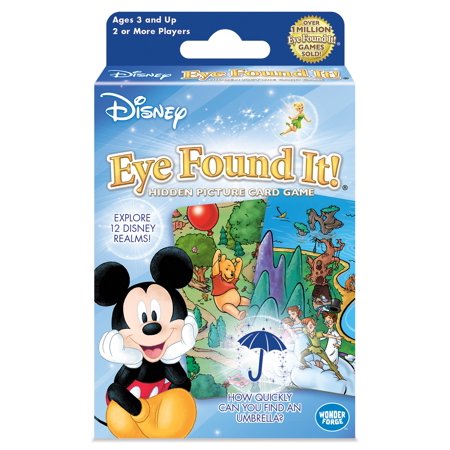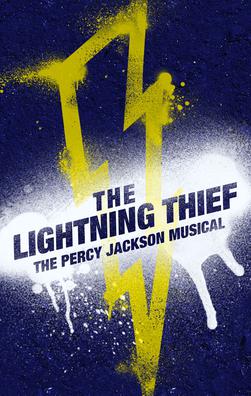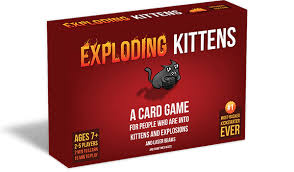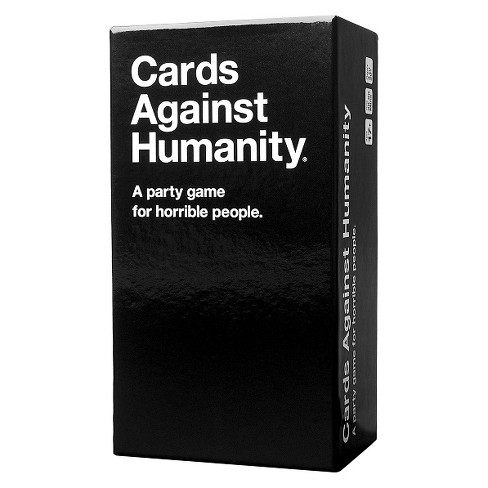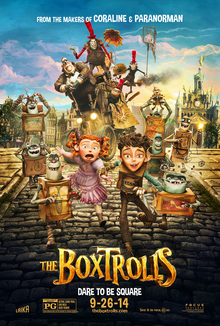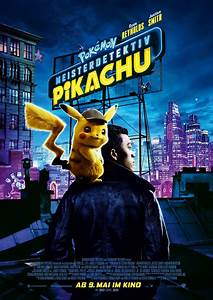Dear Mr. and Mrs. Goodblood,
Thank you for expressing your concerns about Rodney’s First Term grade. Please understand that the highest mark of “Chosen One” is exceedingly rare, even among our exceptional student body here at Avalon. Rodney’s grade of “Stalwart” is neither a mistake nor cause for concern, but a performance about which you and he can both be proud.
As I indicated in my written evaluation, Rodney is a bright young man, although he does have room for improvement in the areas of effort and behavior. I’m told by his Warrior, Wizard, and Rogue teachers that he shows equal aptitude in all three classes, so I’m confident that with support and encouragement, his skills will continue to improve.
Sincerely,
Madeleine Whimbley
Teacher of Intermediate Feats & Virtues
Avalon Preparatory Academy for Adventurers
*
Dear Mr. and Mrs. Goodblood,
I apologize for the misunderstanding. When I said Rodney would improve, I did not mean that he should expect to earn a grade of “Chosen One” next term (or any other term for that matter). “Hero” would really be a more realistic goal, perhaps further down the road, should he improve his efforts, though I’m afraid “Paragon” would be quite out of reach.
Sincerely,
Madeleine Whimbley
*
Dear Mr. and Mrs. Goodblood,
Thank you for the information about Rodney’s early displays of giftedness as a child. I understand how excited you must have been about the promising results of his Early Childhood Augury, but you should know that ECAs have proven notoriously inaccurate. (In fact, the National Questing Board no longer recommends them). In any event, I did not mean to impugn Rodney’s potential, and while I understand that his sense of destiny might be a bit shaken, I hope you’ll agree that many paths to success still lie open to him.
Sincerely,
Madeleine Whimbley
*
Dear Mr. and Mrs. Goodblood,
I must respectfully disagree with your definition of success. Most of our graduates go on to successful adventuring careers without being Chosen Ones. It would be insulting to limit any definition of “success” to only those few. In fact, in my seventy-three years here at Avalon, I’ve only ever had two pupils earn that distinction. It is, necessarily, quite rare, especially during a lengthy interbellum period like the one we are currently enjoying. If you ask me, we should consider ourselves lucky to have no present need for Chosen Ones.
On a brighter note, you’ll be happy to know that Rodney did quite well on his recent Courage and Morality quiz.
Sincerely,
Madeleine Whimbley
*
Dear Mr. and Mrs. Goodblood,
I cannot violate student privacy by discussing former students with you in any detail. Suffice it to say, I’m sure you’ve heard of the two Chosen Ones I mentioned having taught. They graduated in the same year, and you no doubt heard all about their eventual feud and subsequent downfall. If I may say, they serve as an excellent reminder that being a Chosen One is not all it’s cracked up to be. I’ve known many a Stalwart (or Hero, should Rodney’s effort and behavior continue to improve!) who have gone on to happy and fulfilling quests.
Sincerely,
Madeleine Whimbley
*
Dear Mr. and Mrs. Goodblood,
I resent your implication that my instruction was in any way responsible for the Calamity of the Twins. Avalon graduates are responsible for their own choices after leaving us, and the moral track record of the vast majority of our adventurers is quite positive. I assure you that Rodney is in good hands in my class.
Respectfully,
Madeleine Whimbley
*
Dear Mr. and Mrs. Goodblood,
No, I am not only taking credit for my successes and ignoring my failures. I happen to be well aware of my personal shortcomings (though they are no business of yours), and poor teaching is not one of them.
Speaking of shortcomings, however, I’m sorry to report that Rodney’s recent score on his Courage and Morality quiz appears to have been the result of cheating. I caught him with a Talisman of Balacoth today, which I don’t need to tell you is a serious infraction of the Avalon Code of Conduct. Please expect further communication from the principal regarding this matter.
Sincerely,
Madeleine Whimbley
*
Dear Mr. and Mrs. Goodblood,
I’m sorry you have not yet heard from the principal. Please understand that he is only a couple of years from retirement and has slowed down some after several good centuries of service to Avalon.
To answer your accusation, however, I am NOT making a baseless charge. On the day in question, Rodney was the only one to have answered any questions correctly, and I grew suspicious when even his brightest classmates were making silly mistakes. Even I had slipped up once or twice only to have your son correct me. Lo and behold, when I checked under his desk, there it was, a little carving of the Fist of Balacoth, and it had taken hold of all the good fortune in the room. After I dispelled it, I had a hunch, so I let the class retake their Courage and Morality quiz. Suffice to say, your son no longer has the highest score.
We do not permit talismans, amulets, or potions of any kind within the school, for obvious reasons. I do not know where he obtained his contraband, but you may want to have a conversation with your son.
Respectfully,
Madeleine Whimbley
*
Dear Mr. and Mrs. Goodblood,
To suggest I was suspicious of Rodney merely for giving correct answers is ridiculous. I know he is quite capable of performing well on his own, and I’m sorry he felt the need to resort to cheating in order to prove himself. He remains a student of great potential for whom I still have hope.
And no, unfortunately, Rodney may not have an extension on his term paper. It remains due tomorrow.
Sincerely,
Madeleine Whimbley
*
Dear Mr. and Mrs. Goodblood,
I was as surprised as you by the drop in Rodney’s Second Term grade. My previous optimistic statements about his potential were never meant as a guarantee. I’m sorry if you misunderstood.
I’m afraid it was his term paper. Students were to write an essay extolling one of the classic heroic virtues with three specific examples, but Rodney chose to write about “ambition,” which was not on the assigned list of options. (I question whether it is a virtue at all.) Please let me know if you have any further questions.
Sincerely,
Madeleine Whimbley
*
Dear Mr. and Mrs. Goodblood,
I’m sorry if you were the ones who gave Rodney the idea to write his term paper on ambition. He alone is responsible for his work. Might I suggest giving him space to complete his assignments more independently in the future? (After all, you won’t be out on his quests with him, will you?)
I do not think it necessary for you to hire Rodney a private mentor. Of course, that is ultimately up to you, but Rodney’s challenges have more to do with personal choices than ability.
At this point, should you have any further concerns, it may be best to arrange a meeting. Is there a day or time that would work well for you?
Sincerely,
Madeleine Whimbley
*
Mr. and Mrs. Goodblood,
It was completely inappropriate of you to appear via astral projection in my living room last night. I understand you are busy, but if you do not want to meet in person, please continue to direct all correspondence in writing to my school address.
Respectfully,
Madeleine Whimbley
*
Mr. and Mrs. Goodblood,
Of course I want the best for Rodney, and no, I do not have anything to hide.
Rodney, however, may. I don’t imagine you’ve looked at his note-scroll recently? When I saw it today, it was filled with inappropriate doodles of damnation knives, Shigmala the Defiler, and other symbols of the malign. With your permission, I’d like to refer him for counseling with Sibyl Salens, our school soothsayer.
Concernedly,
Madeleine Whimbley.
*
Dear Mr. and Mrs. Goodblood,
It is no shame to receive counseling, and I’m shocked you would suggest otherwise.
Furthermore, I’m unable to respond to the letter from Rodney’s private mentor, as school policy prohibits me from discussing a student with anyone other than a parent, guardian, or fairy godparent. You do understand, of course.
I must say, though, that I have serious doubts about either the intelligence or integrity of a private mentor who would judge Rodney’s current work to be of “Chosen One” quality. In fact, I can’t believe we are still on the topic of Chosen Ones at all. Allow me to be frank: Your son is not and never will be a Chosen One. In fact, did you know that most Chosen Ones tend to be orphans? If it makes you feel any better, I doubt we will have any Chosen Ones this year at Avalon. The world is at peace. Get a grip. (And counseling for your son).
Sincerely,
Madeleine Whimbley
*
Dear Mr. and Mrs. Goodblood,
Per the principal’s request, please accept my formal apology for any implication in my previous letter that you ought to die in order for Rodney to become a Chosen One. That was not my intent.
Yours truly,
Madeleine Whimbley
*
Dear Mr. and Mrs. Goodblood,
Rodney’s behavior in class really has become quite intolerable. Today he accused me of being an “apologist for obsolete heroism” who is “shackled by her loyalty to the fading Light,” simply because I questioned the necessity of his bragging about the new certified Ancient Birthright Sword you apparently bought him for his birthday. He continued to spend the duration of class doodling pictures of it on the corner of his parchment along with the words, “I AM YOUR SAVIOR,” instead of working on his Hero Portfolio. At this rate, he’ll be lucky to make “Rapscallion” by the end of Third Term.
Sincerely,
Madeleine Whimbley
*
Dear Mr. and Mrs. Goodblood,
As I am the only Intermediate Feats and Virtues teacher at Avalon, and as it is a required class, the school will be unable to meet your request to move Rodney into another section. (Believe me, I checked.) Given the circumstances, I’m sure we can stick out the rest of the year and make the best of what’s left of it.
As far as Rodney’s selection of advanced courses for next year, no single course of study is more or less likely to earn him a “Chosen One.” I know the recent craze has been for Wizarding, and before that it was Warriors, but the actual data support neither. If anything, Rogues tend to be slightly overrepresented in the available data from the last several heroic ages, though the numbers are not statistically significant since Chosen Ones are so rare.
In any event, I would encourage Rodney to continue with whichever course of study he most enjoys. And yes, he will be stuck with me again for Advanced Feats and Virtues.
Sincerely,
Madeleine Whimbley
*
Dear Mr. and Mrs. Goodblood,
I’m sorry to hear that Rodney is looking at new schools for next year. For what it’s worth, I strongly urge you to reconsider. As we’re fond of saying around here, “There’s always room for redemption at Avalon!” and your son did show great promise once.
Sincerely,
Madeleine Whimbley
*
Dear Mr. and Mrs. Goodblood,
No, “great promise” does not mean that Rodney could still be a Chosen One. Holy heavens, no. Just no.
Madeleine Whimbley
*
Dear Mr. and Mrs. Goodblood,
Never mind, I’ve had it. Your son tried to open a Dark Portal today while my back was turned to the class. Luckily his classmates, who are better students than he is, banished it before it could do irreparable harm. The principal will be following up separately to impose a suspension for Rodney’s repeated violations of the Avalon Code of Conduct.
On a personal note, I feel the need to express how disappointed I am in your son’s decline this year. I’ve done what I can, but I only see him an hour a day. It’s not like I live with him.
Yours,
Madeleine Whimbley
*
Dear Mr. and Mrs. Goodblood,
I understand that Rodney’s application for transfer to the Pinnacle School for Unappreciated Youngsters has been accepted. I would say “Good Luck,” except that I have rather strong philosophical disagreements with their aims and methods there, and I know that Rodney cannot accurately explain the role of Luck in an adventurer’s success anyway. So instead, I’ll just say farewell. (I’m sure the feeling is mutual).
Regards, and Ever Yours in the Light,
Madeleine Whimbley
*
Dear Fairy Godparent,
I write to you in these darkening days with tidings of great hope from Avalon Preparatory Academy. The First Term performance of your orphan, whom I dare not mention by name lest the spies of evil are watching, has earned the rare and distinguished mark of Chosen One. Rejoice!
Please see the enclosed packet for more information, and sign, enchant, and return the accompanying form within ten business days to grant permission for further assessment and, if necessary, individual heroic mentoring.
Congratulations! On a more personal note, I have reason to believe that, should your orphan in fact be Chosen, the Dark Lord Rodney and his forces will hardly present an insurmountable challenge.
Best wishes,
Madeleine Whimbley
Principal
Avalon Preparatory Academy for Adventurers
© 2019 by P.G. Galalis

P.G. Galalis would love to have been a member of Oxford’s famous literary group, the Inklings (minus all the tobacco smoke), but since he was born on the wrong continent and many decades too late, he compensates by writing and teaching fantasy, science fiction, and other literature. His fiction is also forthcoming in Galaxy’s Edge Magazine, and you can visit him on the web (https://pggalalis.com) or Twitter (@pggalalis). He lives with his family near Boston, MA.
If you enjoyed the story you might also want to visit our Support Page, or read the other story offerings.


